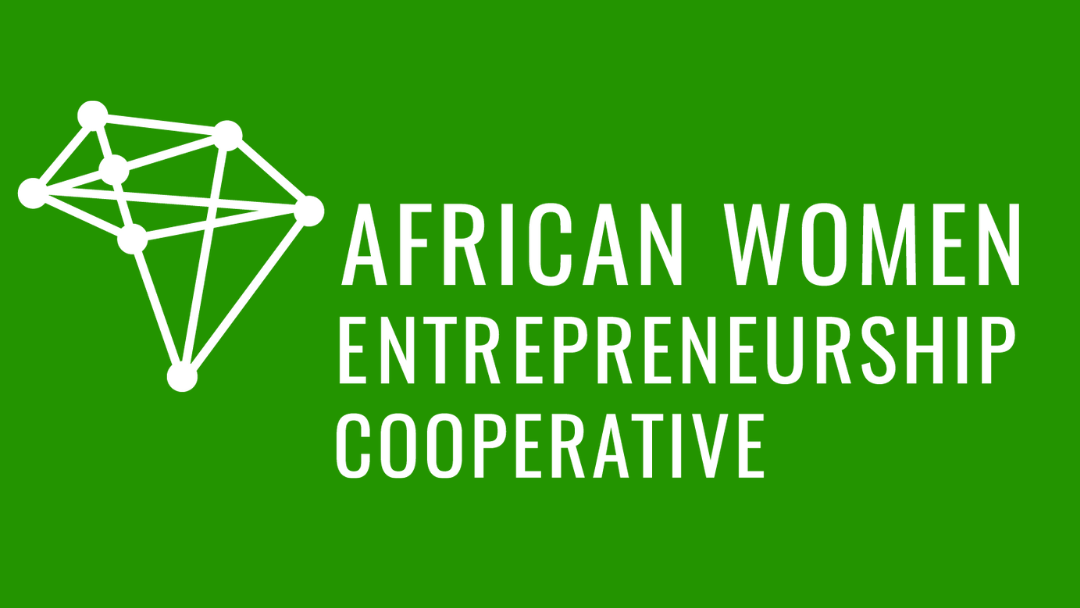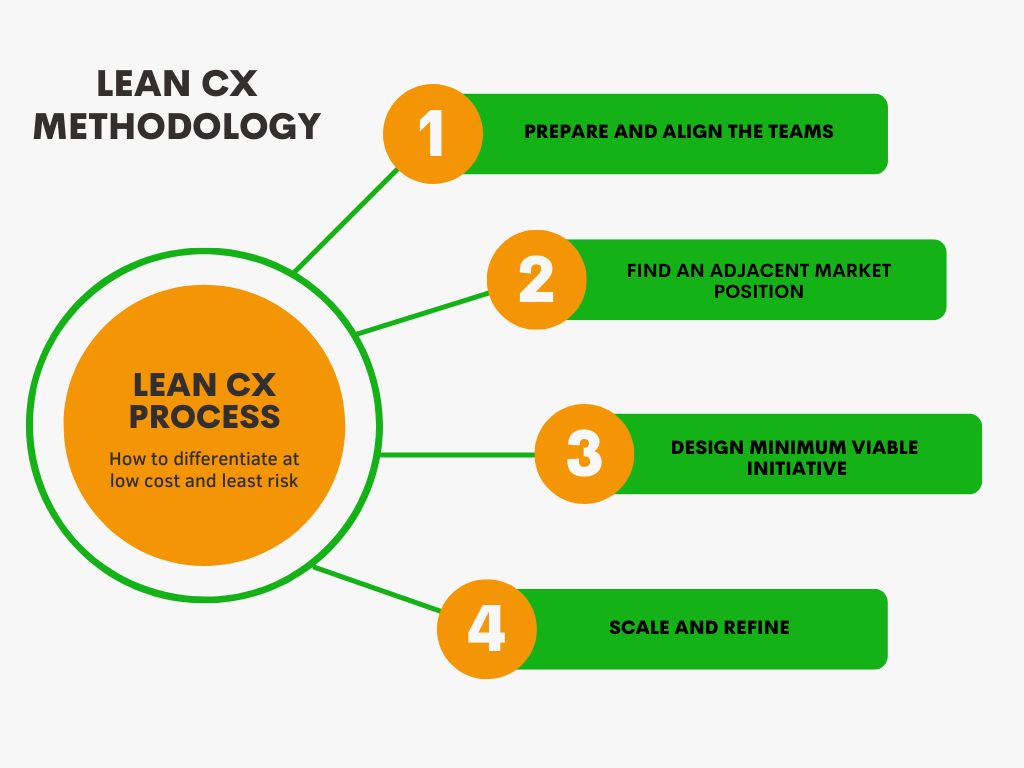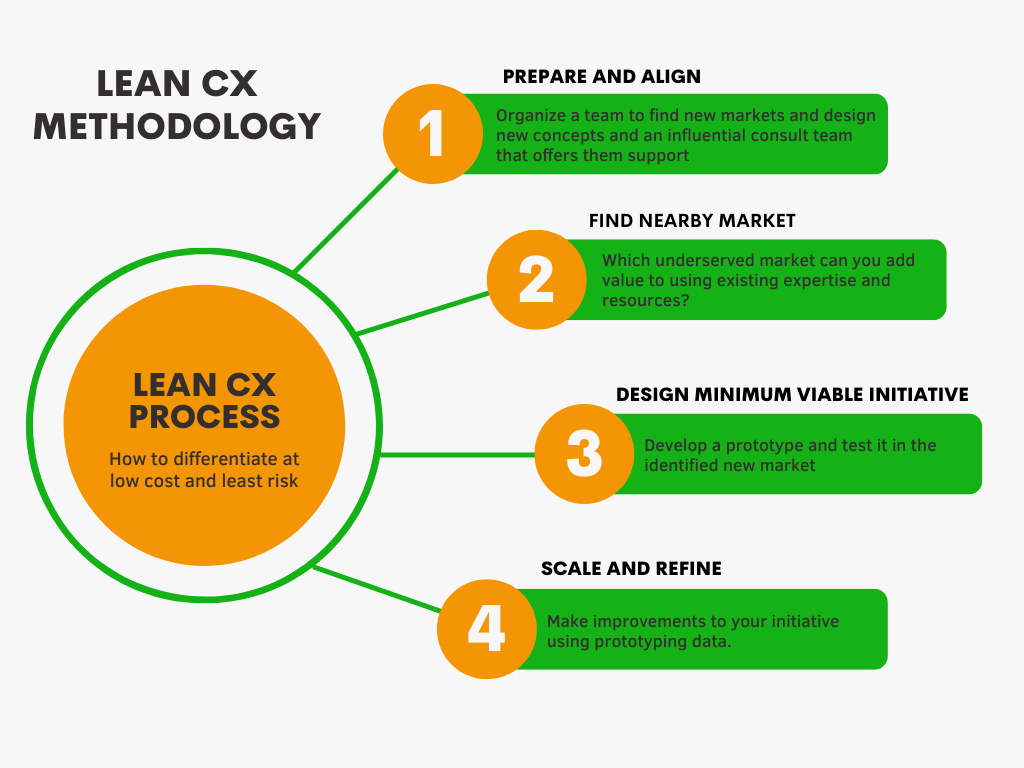Lean CX: The Key To Scaling Business and Revenue Growth
As a business owner, you certainly have customers. But whether you’re at the start of your journey with one client or a seasoned entrepreneur with thousands of clients, the success of the business is linked to your ability to continue attracting and retaining more customers over time. This requires investing time and effort in getting to know your customers at a deep enough level to uncover insights that allow you to create a superior value proposition that continues to resonate with them, purchase after purchase.
Unmute the ‘Customer Complaint’ Button
At some point in our lives, we’ve all been at the tail end of a poor customer experience. We’ve had to either make a dreaded phone call, send an email, post a tweet or return a product to a seller because the service or end product we purchased was not as advertised. And frustratingly, it can be difficult to even get a human response.
It is imperative for business owners to understand the value in harnessing both positive and negative customer feedback, with particular attention on the latter. With 86 percent of customers sharing that they quit doing business with a company as a result of a negative experience, negative feedback is one of the greatest sources of learning and opportunity for development, and it shouldn’t be feared.
Continuously collecting feedback at the point-of-experience gives customers an outlet to immediately express their dissatisfaction; you’re more likely to get their real emotion and they’re less likely to vent frustrations elsewhere (like to their friends or on social media).
Doing this long enough will:
Uncover trends or patterns that inform where to focus your efforts
Help you enhance your customer service experience
Play a vital role in supporting the development or enhancement of your products
Introduction to Lean CX
“How often have you heard people wonder why a certain company doesn’t offer the level of convenience they find at Amazon, the personalization they experience at Netflix or the unique terminal and inflight experience of a flight with Delta Airlines. These successful players have one thing in common: they built their business models on customer data and tailor all of their activities to the customers’ needs.” - Excerpt from Deloitte Digital’s report on CX operating models paving the way to success.
Customer Experience (CX), when effectively applied, can be leveraged for organizational growth and innovation and need not be expensive. As a business owner, you interact with your customers daily, and whether you realize it or not, you are gathering a great deal of information in the process. As you grow business, and having found what works, it is normal to adopt processes in order to scale effectively. Unfortunately for most, this often means slowed innovation, which inevitably leads to slower growth as the market - and customer needs - change.
Entrepreneurs tend to abandon the lean customer-centric practices that helped them set up their businesses in the first place, such as adding a new product, flavor or design based on customer feedback. Furthermore, they set up CX (customer experience) teams, which are viewed as merely support functions that react to customer complaints or questions after a product or initiative has been launched rather than utilize them to inform the strategic direction of the company. This is despite the fact that customer-facing teams have direct access to insights and data that can help businesses assess the market and proactively build new, useful products or services.
Setting Up Your Operational Business for Continuous Innovation
In a McKinsey article, the author builds a case and creates a pathway for organizations to incorporate design into CX. In many companies, design and CX teams often work in separate departments, exclusive to one another, and yet both leverage the same customer insights to enhance the organization’s products and experiences. Without incorporating the two, as the article advocates, CX efforts are unlikely to yield the desired ROI (return on investment).
Lean CX, a methodology designed by Capfeather Global, echoes the same. It combines design thinking, cognitive psychology and Lean startup principles to generate value propositions that differentiate companies. Its aim is to provide organizations a reliable pathway to innovation that is human-centered and low cost. Often, companies are criticized for developing initiatives and products that are out-of-touch with community and customer needs. Human-centered innovation curbs this by co-creating solutions with customers to ensure that the end product is relevant to their needs.
Every business has accumulated customer data over time. Instead of conducting new market research, Lean CX leverages this existing data to generate solutions while saving money. As an entrepreneur, start by aggregating all the data in your organization using an excel sheet then apply human-centered design to develop and set-up small scale experiments to test and (in)validate concepts before scaling, saving you more money while minimizing risks associated with failure.
Like any innovator will acknowledge, new initiatives are often shot down and face internal resistance when launched or worse still, during transitions from the innovation team to the core team after concept validation. Lean CX allows existing core teams to use company and market data to develop solutions for customers without fundamentally changing the existing organizational structure. This way, the company can move beyond incremental innovation using its existing resources, and when achieved, business owners can spend less time convincing managers to embrace new innovations.
Benefits to Adopting Lean CX Methodology
Lean CX allows teams to get closer to the problem, thereby igniting the ability to innovate for their own customers, rather than outsourcing the job to external innovation consultants. This enables the company to reduce chances of internal resistance and out-of-touch solutions while making innovation a company norm.
It also enables companies in crowded markets to differentiate themselves by finding their ‘Adjacent Market Position’. In every business, there is likely an overlooked market segment, whether potential or existing, that requires its services or products. These segments may engage with businesses due to lack of existing alternatives or the company offers the closest alternative to what they would prefer.
Through Lean CX, companies can tap into these segments and add value. This approach allows businesses to use existing resources and knowledge to offer added value that differentiates itself from competitors while increasing their revenue.
An example of this would be WeTu, a Kenyan social enterprise that provides mobility solutions, clean energy and safe water to fishing communities. In 2021, WeTu sought to utilize its excess solar energy to add more value to its customers. Through its WeWater and WeSolar offerings, it was already engaging fishermen who also suffered post-harvest losses due to fish spoilage. As a result, the company utilized the excess energy to provide solar cooling solutions, thereby adding value to fishermen up the fish value chain while generating additional revenue for the business. By understanding the needs of their customers, WeTu was able to better serve an underserved customer segment.
Lastly, Lean CX advocates for businesses to use their insights to come up with the ‘Most Advanced Yet Acceptable’ (MAYA) solutions. While it’s everyone’s dream to come up with a moonshot innovation, customers might find your solution strange if it does not align with their existing way of life or at least a part of it. The solution is to design a new product or initiative that can blow customers’ mind while encouraging them to engage actively.
A great example of an acceptable yet advanced offering is the M-pesa Agent model. During its set up in 2007, mobile money was a completely new technology, but sending money to family across long distances was not, nor was visiting a retail shop to purchase bread or any other goods. By tapping into existing cultural norms, infrastructure (i.e. retail shops) and community members (i.e. shop owners), M-pesa introduced a sense of familiarity to the process, making it easier for customers to engage.
As an entrepreneur, it is imperative that you offer a robust value proposition to your customers so that you can differentiate yourself at low cost and limited risk. Lean CX offers the tools, frameworks and mindset for you to do so. As you explore this framework, keep in mind that like all good things, it requires deliberate and consistent effort to get the coveted long term benefits.
For more information on Lean CX, click here.
Kimani Purity is a Human-Centered Designer whose interests are in creating and implementing enjoyable and impactful customer experiences. With over 3 years of field experience, she has contributed to innovation in the Kenyan plastic recycling space by designing and implementing new business models at Mr. Green Africa that enable customers to recycle their plastics in exchange for household items at retail shops. In addition, she has worked with WeTu, a social enterprise in Western Kenya to design a new business model for offering solar cooling solutions to fishermen and market traders experiencing post-harvest losses. As a Lean CX Practitioner, her ultimate goal is to ensure that business owners can thrive by setting up initiatives that positively impact the planet while generating profit.



